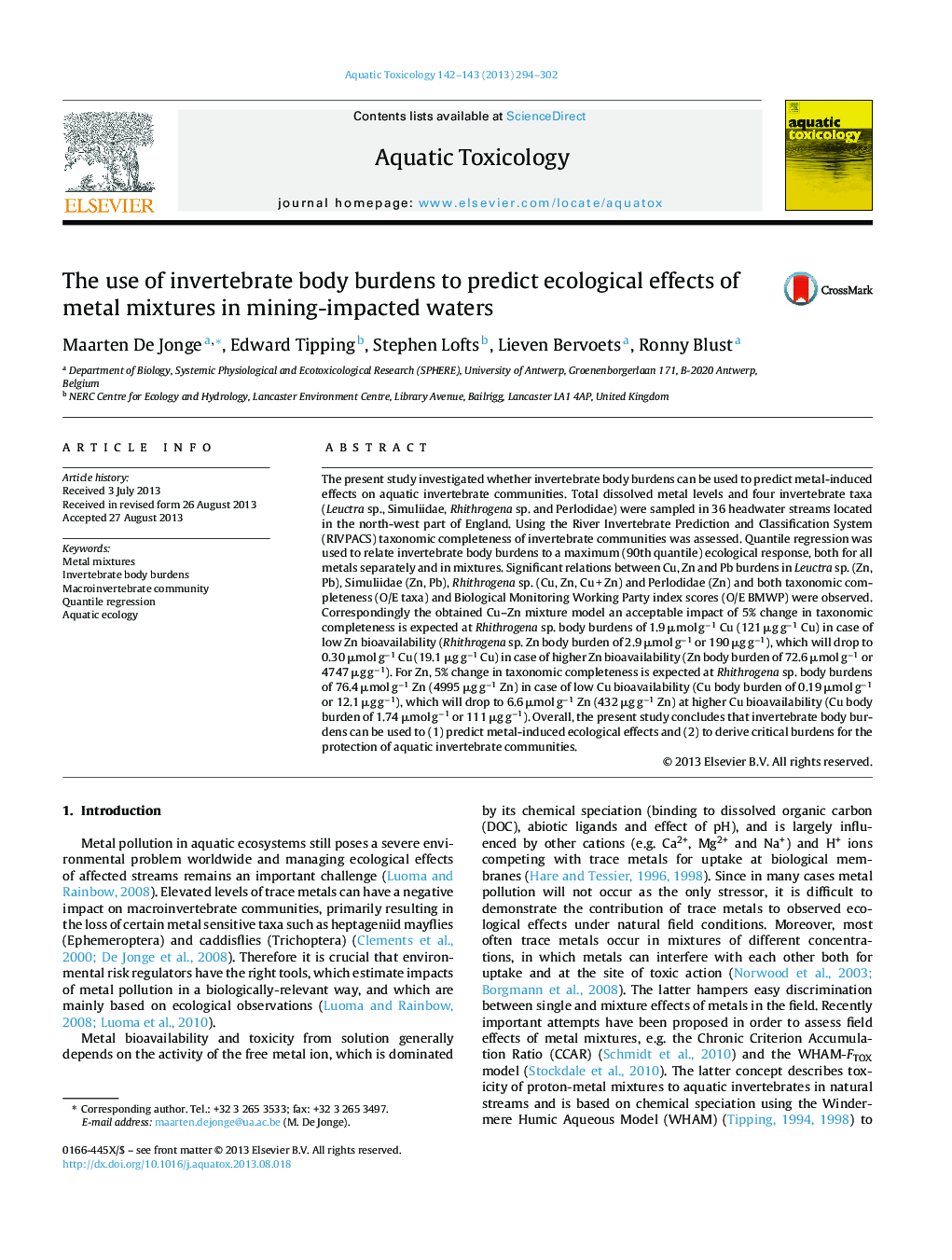| کد مقاله | کد نشریه | سال انتشار | مقاله انگلیسی | نسخه تمام متن |
|---|---|---|---|---|
| 4529447 | 1625961 | 2013 | 9 صفحه PDF | دانلود رایگان |

• Can invertebrate body burdens be used to predict ecological effects of metals?
• Quantile regression was used to relate body burdens to ecological responses.
• Negative relations were observed between ecological responses and metal burdens.
• Critical body burdens depicting ecological effects could be derived.
• Invertebrate body burdens can be used to predict metal-induced ecological effects.
The present study investigated whether invertebrate body burdens can be used to predict metal-induced effects on aquatic invertebrate communities. Total dissolved metal levels and four invertebrate taxa (Leuctra sp., Simuliidae, Rhithrogena sp. and Perlodidae) were sampled in 36 headwater streams located in the north-west part of England. Using the River Invertebrate Prediction and Classification System (RIVPACS) taxonomic completeness of invertebrate communities was assessed. Quantile regression was used to relate invertebrate body burdens to a maximum (90th quantile) ecological response, both for all metals separately and in mixtures. Significant relations between Cu, Zn and Pb burdens in Leuctra sp. (Zn, Pb), Simuliidae (Zn, Pb), Rhithrogena sp. (Cu, Zn, Cu + Zn) and Perlodidae (Zn) and both taxonomic completeness (O/E taxa) and Biological Monitoring Working Party index scores (O/E BMWP) were observed. Correspondingly the obtained Cu–Zn mixture model an acceptable impact of 5% change in taxonomic completeness is expected at Rhithrogena sp. body burdens of 1.9 μmol g−1 Cu (121 μg g−1 Cu) in case of low Zn bioavailability (Rhithrogena sp. Zn body burden of 2.9 μmol g−1 or 190 μg g−1), which will drop to 0.30 μmol g−1 Cu (19.1 μg g−1 Cu) in case of higher Zn bioavailability (Zn body burden of 72.6 μmol g−1 or 4747 μg g−1). For Zn, 5% change in taxonomic completeness is expected at Rhithrogena sp. body burdens of 76.4 μmol g−1 Zn (4995 μg g−1 Zn) in case of low Cu bioavailability (Cu body burden of 0.19 μmol g−1 or 12.1 μg g−1), which will drop to 6.6 μmol g−1 Zn (432 μg g−1 Zn) at higher Cu bioavailability (Cu body burden of 1.74 μmol g−1 or 111 μg g−1). Overall, the present study concludes that invertebrate body burdens can be used to (1) predict metal-induced ecological effects and (2) to derive critical burdens for the protection of aquatic invertebrate communities.
Journal: Aquatic Toxicology - Volumes 142–143, 15 October 2013, Pages 294–302